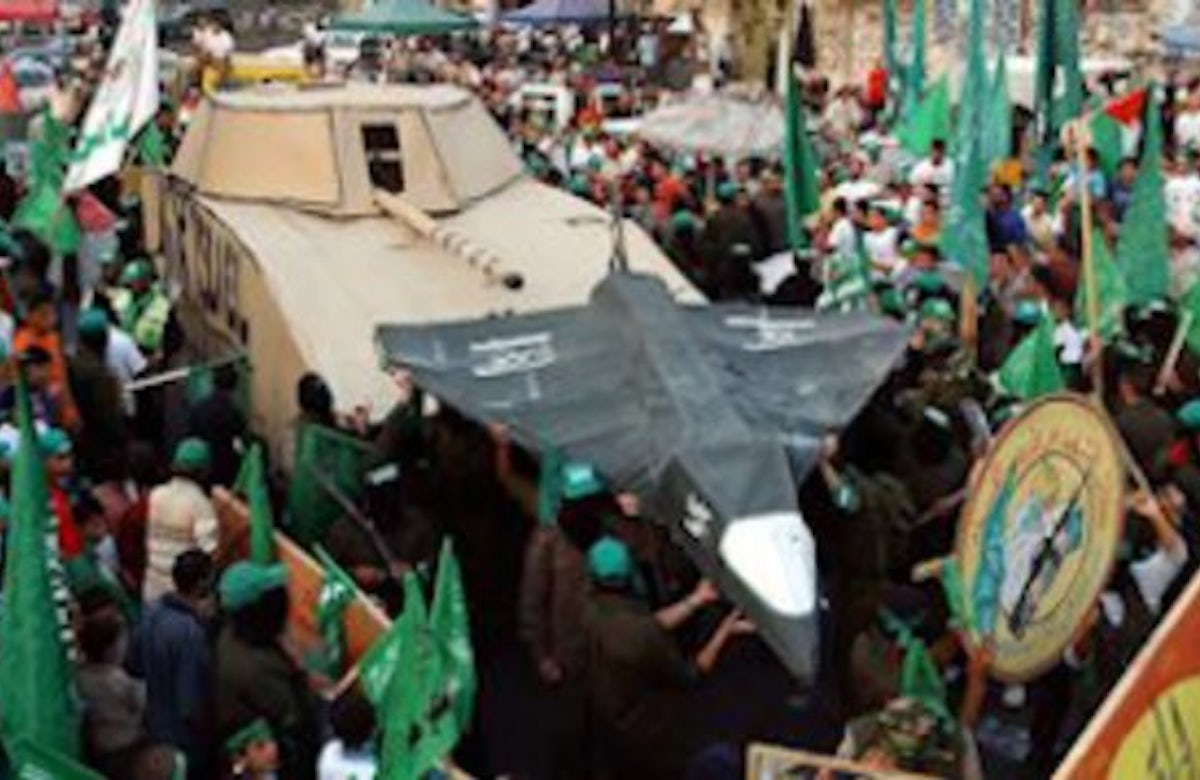By Pinhas Inbari
The current round of hostilities between Israel and the Hamas government in Gaza is rooted in an internal struggle within Hamas. The organization is embroiled in a leadership struggle pitting the Iranian-backed Ismail Haniyeh against the Qatar and Egypt-supported Khaleed Mashal and his deputy Musa Abu Marzuq.
 Signs of the internal conflict were already visible during the visit of the emir of Qatar in Gaza, where he delivered a clear message: should Hamas cease its terror operations and rocket offensive against Israel and engage in reconstruction, it would receive US$ 400 billion from the Qatari government. At the same time, Qatar attempted to convince the Hamas leadership in Gaza to forgo its ambition to serve as the organization’s official global leadership.
Signs of the internal conflict were already visible during the visit of the emir of Qatar in Gaza, where he delivered a clear message: should Hamas cease its terror operations and rocket offensive against Israel and engage in reconstruction, it would receive US$ 400 billion from the Qatari government. At the same time, Qatar attempted to convince the Hamas leadership in Gaza to forgo its ambition to serve as the organization’s official global leadership.
One of the arguments against the leadership in Gaza, exemplified by the current round of hostilities, is that it is exposed to Israeli surveillance and targeting. Hence, it is arguably better to base the leadership in remote locations such as Cairo or Doha. Ahmad Jabari’s demise served to prove Qatar’s argument.
Qatar’s visit to Gaza was viewed with suspicion in Tehran, where the Iranian government has good reason to believe that Qatar aims to undercut Gaza’s ties to the Islamic republic. While Khaleed Mashal and Musa Abu Marzuq have formally joined the Sunni Muslim Brotherhood, the Gazan leadership has remained loyal to Shiite Iran, whose presence in the Gaza Strip runs deep. It controls the military wing of the Al Qassam Brigades, leaving the civil leadership embodied by Haniyeh and Mahmoud al-Zahar no alternative but to challenge Mashal and Abu Marzuq in the struggle for regional leadership.
 Though the barrage of rockets into Israel from Gaza has been ongoing, the latest round of hostilities erupted last Saturday when the pro-Iranian faction, the Popular Front, targeted an IDF jeep that was moving along the Israeli side of the border, following an unsuccessful attempt to blast a tunnel under the feet of IDF soldiers. The attacks, while physically aimed at Israel, were indirectly pointed at Qatar, sending the message that Hamas leaders in Gaza would not separate from Iran and would persevere in the quest to assume the leadership of the movement.
Though the barrage of rockets into Israel from Gaza has been ongoing, the latest round of hostilities erupted last Saturday when the pro-Iranian faction, the Popular Front, targeted an IDF jeep that was moving along the Israeli side of the border, following an unsuccessful attempt to blast a tunnel under the feet of IDF soldiers. The attacks, while physically aimed at Israel, were indirectly pointed at Qatar, sending the message that Hamas leaders in Gaza would not separate from Iran and would persevere in the quest to assume the leadership of the movement.
Qatar’s moves in Gaza are coordinated closely with its Syrian strategy, where the country seeks to counter Iranian influence. For its part, Israel has also kept Iran in mind, specifically when it targeted and destroyed the Fajr-5 missiles capable of hitting air force bases and military installations in addition to civilian targets in Tel Aviv.
Destroying the Fajr-5 arsenal may help the IDF concentrate its might on Iran should an attack on its nuclear installation occur. Thus, Operation Pillar of Defense, in addition to protecting Israeli civilians, is also neutralizing a possible second front in a war with Iran and is in line with the destruction of a missile factory in Sudan a few weeks ago.






